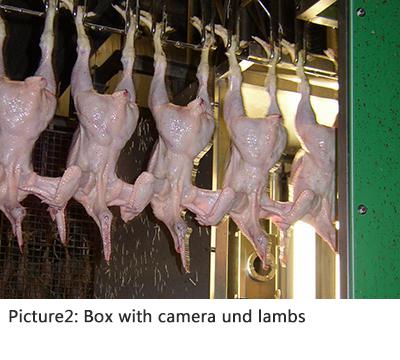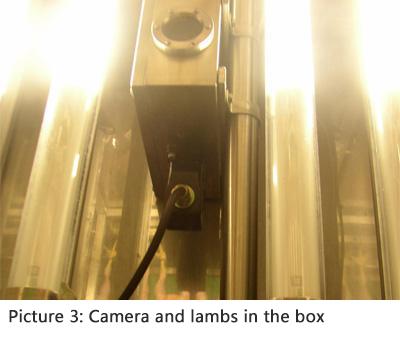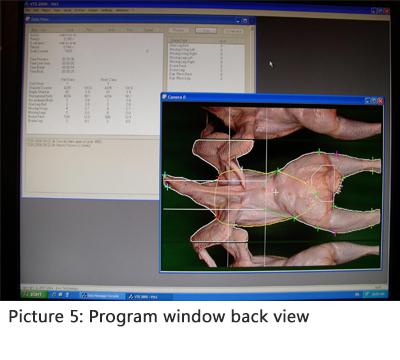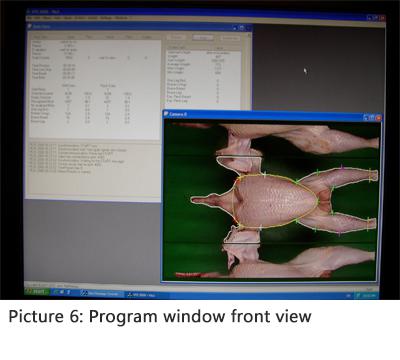Systems for Poultry
Technical description of the chicken classification and grading system VTS2000
1. generals
The VTS 2000 is a fully automatic system for classification and grading of chicken carcasses. The system is based on digital video image analysis.
The major components are:
- the cameras
- the lamps
- optical sensors
- image analysis computers
- Stainless steel boxes with green back plates
2. procedure of measuring
The system consists of two camera stations. The first camera will take a picture from the back and the second from the front of the chicken. The detection of the carcasses/ hooks is made by photo sensors just passing the grab position with no stop of the line or carcass.
The image analysis system analyses the digitised images.
The analysed data of the first (back view) station will be sent to the second (front view) station. The image analysis program at the second station commands all vision parameters and calculates all weight results and quality parameters. The results will be sent by standard network communication (socket) to the host and parallel for safety reason will be stored in ASCII data files on the local hard disk.
3. data of the machine

4. specification of the components
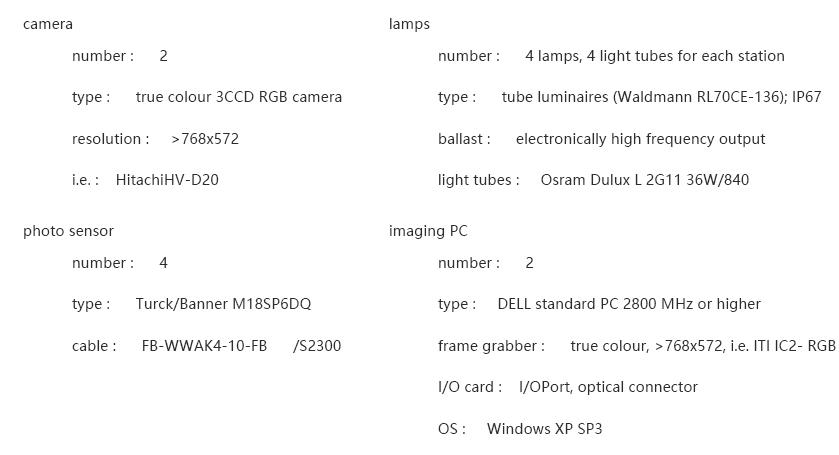
5. technical requirements
electrical power : 220VAC 2500W
Telephone or network connection for remote control system and data exchange.
No air pressure or water is needed.
6. other requirements
The maximum cable length from the camera to the vision computer is 20 m. Therefore the computer station should be near the camera stations. If it is necessary, the computers can be placed in an enclosure. Also even as the system is fully automatic during the operation it will need a system check every morning, where an operator needs to operate with the computer.
7. standard functional measurements
The system requires a limited layout for all components in relation to each other. Usually the both stations are installed just one after the other. In this case there is only one lamp in the middle, 3 in total. However if necessary, depending on space, both stations can be separated.
8. tolerances and possible adaptations
In most of cases the system will fit in a kill line with no or very minor changes with the standard functional measurements.

